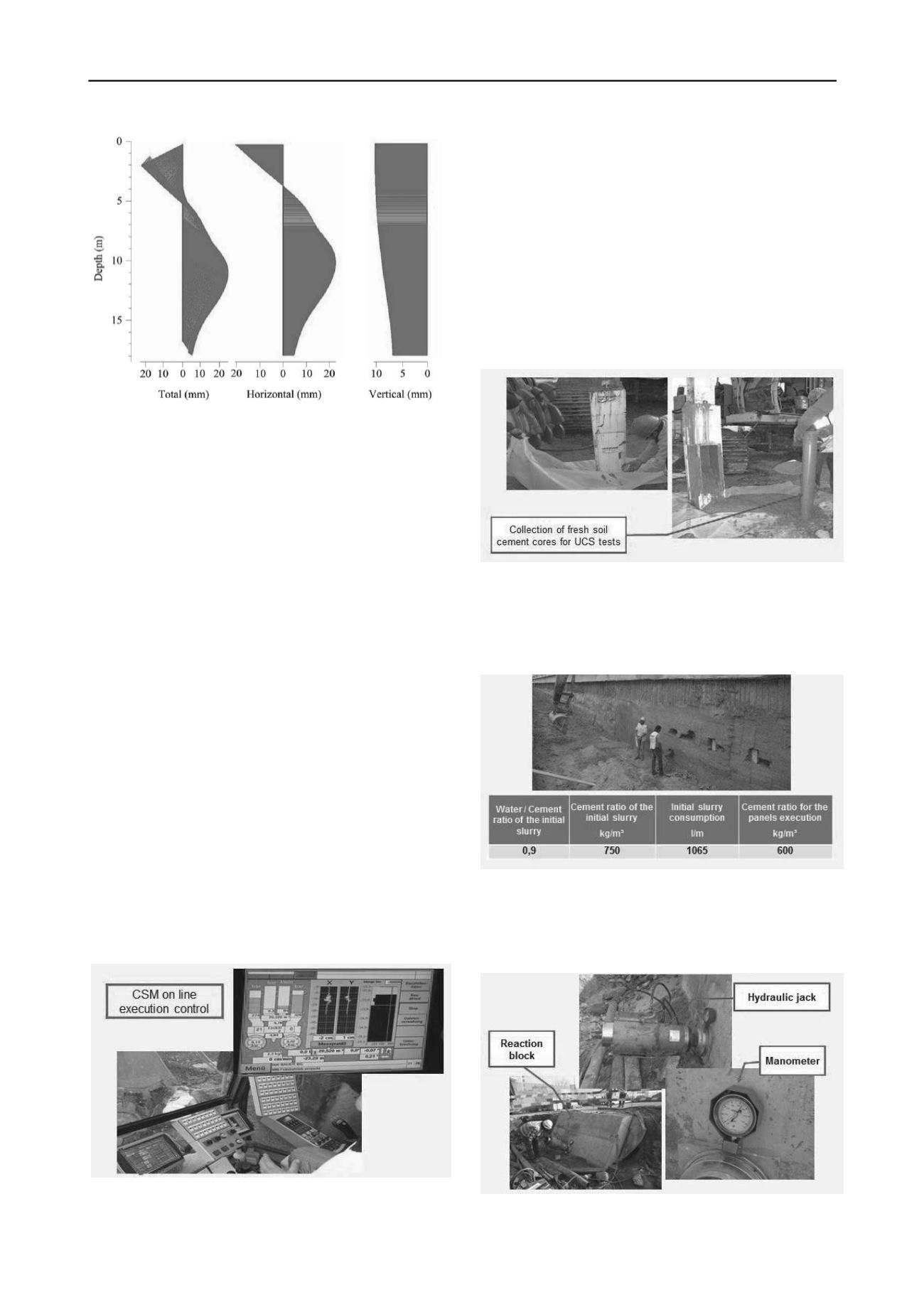
1989
Technical Committee 207 /
Comité technique 207
Figure 4. Displacement diagrams.
For the verification of the ultimate limit states was assumed
a simplified approach. Thus, it was considered that the strength
capacity is the individual combination of the strength resistance
of the CSM panels, the IPE270 profiles and the reinforced
concrete lining wall.
Summarising the main results obtained are the following:
- M
Rd
(resistant bending moment) = 167 kNm/m > 1.5
M
ed
(maximum acting bending moment) = 119 kNm/m;
- V
Rd
(resistant shear force) = 251 kN/m > 1.5 V
Ed
(maximum acting shear force) = 207 kN/m;
-
Rd
(resistant compression stress of CSM) = 2 MPa
(with FS=2) > 1.5
Ed
(maximum acting normal stress)
= 1.1 MPa;
- S
H
(maximum horizontal displacement) = 22.7 mm at
about 10m depth.
Based in these results the following design criteria were
established: take into account the resistance and stiffness of
both the steel profiles and the reinforced concrete lining
wall. The contribution of the CSM panels was considered in
order to protect and confine the steel profiles (exploration
phase) and to perform as preliminary ground improvement,
allowing the execution of the excavation works without any
restriction, in each level.
4 QUALITY CONTROL / QUALITY ASSURANCE
4.1
Control of production parameters
One of the major issues of the CSM technology is the high
quality control and quality assurance (QC/QA), allowing on real
time the monitoring and correction of important parameters,
such as: depth, inclination, speed of mixing tools, pressure
(ground and binder slurry) on cutter wheels, rate and total
volume of pumped slurry (Figure 5).
Figure 5. CSM on line execution control
.
4.2
Control of mechanical soil-cement properties
The execution control is complemented by a tight quality
control and quality assurance, allowing the confirmation of both
the main resistance, homogeneity and deformability of the soil-
cement (soil–binder) parameters. For this purpose, samples
from fresh material (before on suitability tested panels and
during construction) and cores from the executed panels (after a
certain curing age ranging from 7 to 28 days) were collected in
order to access the material homogeneity, as well as to perform
laboratorial tests with different ages, mainly unconfined
compression strength (UCS) and Modulus (Es50 – secant
modulus at 50% of maximum stress of UCS). The results
obtained confirm an UCS minimal of 4MPa and a Es50 not
lesser than 1GPa, satisfying the design criteria (Figure 6).
Figure 6. Collection of soil - cement fresh cores
.
Taking into account the results of the UCS load tests, mainly
on the suitability test panels, the following parameters were
adopted for the execution of the CSM panels are presented on
Figure 7.
Figure 7. Adopted values for the CSM panels execution parameters
.
Regarding the QC/QA of the solution, it should also be
pointed out the execution of suitability and reception tests for all
the permanent ground anchors, allowing the optimization of the
anchors grout body length (Figures 8 and 9).
\
Figure 8. Permanent ground anchor suitability test
.


